The 9 weirdest video game uses of perfectly sensible licenses
FIST OF THE NORTH STAR: SNOWBOARD CHALLENGE!
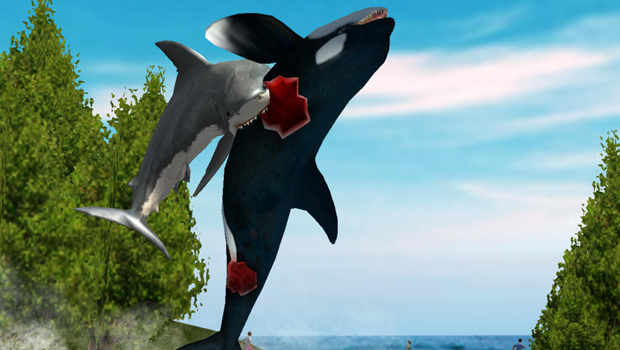
Derivers' license
Some licensed games use weird licenses. Things like confectionary brands and flopped cartoon movies based on dead stand-up comedians. The fact that anyone finds these rights worth paying for with actual money is boggling. But that's not what we're talking about here.
What we're talking about here is games that take a perfectly acceptable, totally game-plausible license and then use it to create the last game anyone would have expected. Some created great, fresh, surprising adaptations. Some turned out about as right as clown at a cocktail party. Click on and discover their belligerent oddness.
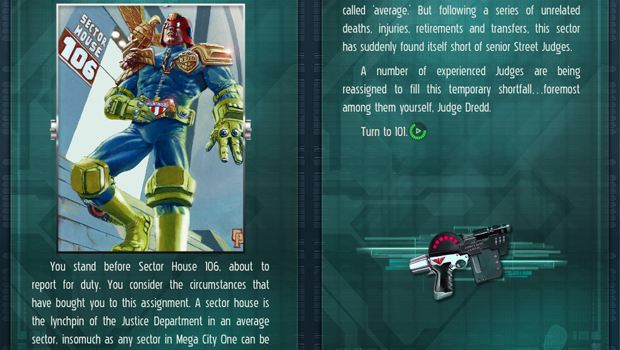
Judge Dredd: Countdown Sector 106 - iOS
You'd have expected the Judge Dredd license to be used for: A gritty, brutally violent, darkly funny action game following Dredd's uncompromising bid to clean up the streets of Mega City One. Something between Arkham City, Gears of War and Mass Effect.
What they actually made was: A gritty, brutally violent, darkly funny text adventure and dice-rolling game, with uncompromising prose descriptions of Dredds uncompromising cleaning up of those there streets. The Fighting Fantasy gamebook of bone-cracking futuristic justice, basically.
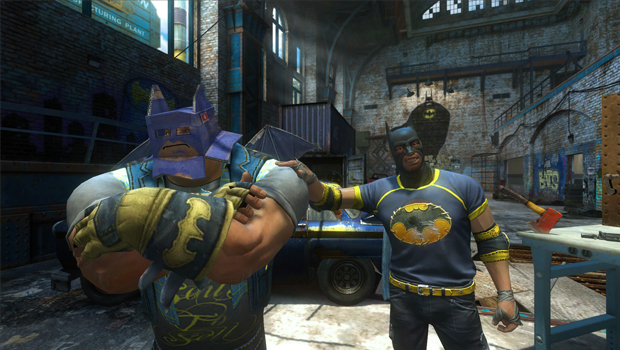
Gotham City Imposters Multi
You'd have expected the Batman license to be used for:A game with Batman in it.
What they actually made was: A cartoony online-only shooter with rival outlaw gangs as its protagonists, one aligned with Bat-worship, the other a haven of Joker-fetishism. There's a vague allusion there to the plot of The Dark Knight Returns there, but its vague like the smell of the shadow of fog. License and game are very tenuously shoe-horned together into a concept that makes very little in-universe sense. Mianly given that Batman would have hospitalised everyone involved within five minutes of finding out about the nonsense they were propagating.
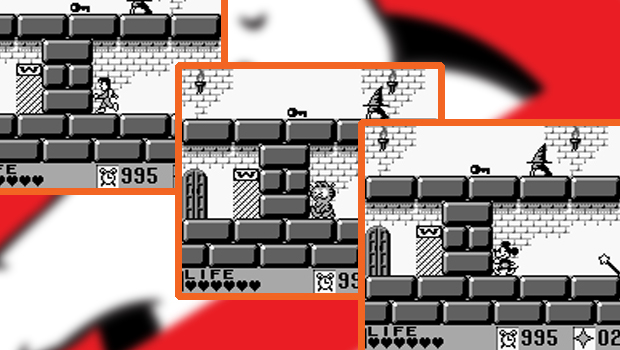
The Real Ghostbusters/Mickey Mouse IV/Garfield Game Boy
You'd have expected the Ghostbusters, Mickey Mouse and Garfield licenses to be used for: Three different games.
What they actually made was: The same game, released in three (barely) different versions in three different territories with a different main character sprite in each. With the Mickey version being the Japanese original, both Garfield and Peter Venkman were bent to the mouse's will like melting plastic spoons in the hands of a drooling pyromaniac. Mickey's block-busting hammer became Peter's proton gun, capable of breaking the blocks beneath his feet but utterly ineffective against the game's various ghosts. Instead, Peter had to use bombs to deal with paranormal threats. Just like in the movies. Garfield probably used a sarcasm drill and blew up ghosts with explosive lasagne, or something.
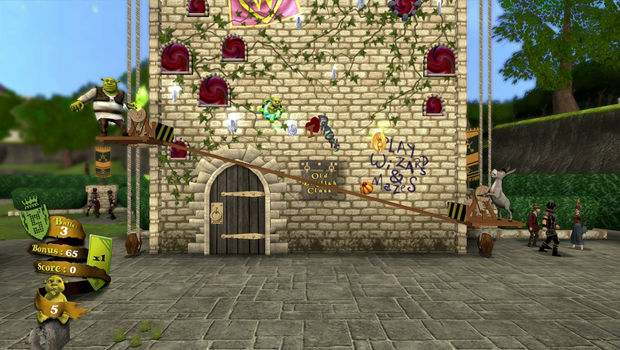
Shrek n Roll XBLA
You'd have expected the Shrek license to be used for: Some manner of platformer, or at adventure game at a push. Essentially something that allowed kiddie-wink Shrek fans a real sense of inhabiting and exploring the bright, breezy, (debatably) hilarious cinematic fantasy world they know and love
What they actually made was: A physics-based 2D puzzle game, in which the player has to tilt a bar in order to roll a Shrek-themed ball back and forth to avoid hazards while ascending a tower. Just like in the movies!
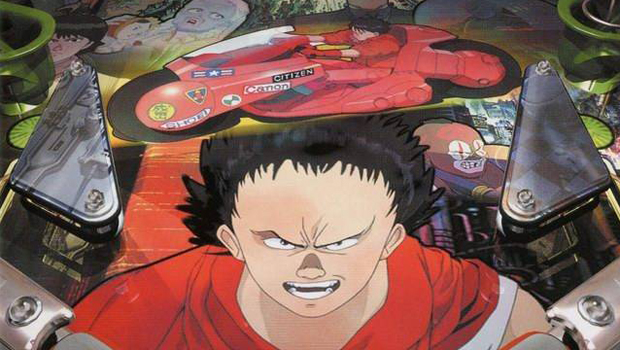
Akira Psycho Ball PS2
You'd have expected the Akira license to be used for: An epic apocalyptic action-adventure game, utilising cutting edge cell shading to evoke Katsuhiro Otomos iconic dramatic vision in startlingly affecting style. With lots and lots of biking bits, and an ending that lets you fire the satellite laser.
What they actually made was: A pinball game. It had four themed stages and when you did well it played a bit of footage from the film. Just like at the end of the movie. Sorry.
Oh actually no. What happened at the end of the movie was that Tetsuo exploded into a huge fleshy mass of pain and fury, wasn't it? That is not much like pinball.
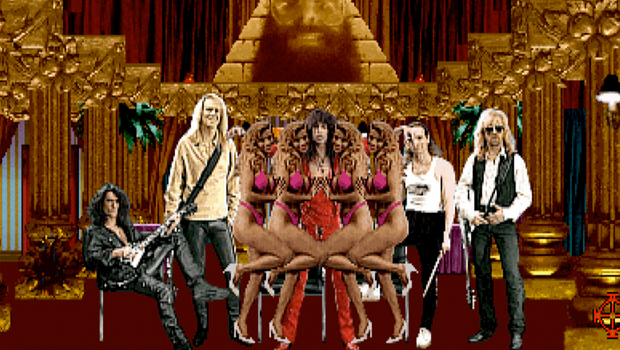
Revolution X Arcade, 16/32-bit consoles
You'd have expected the Aerosmith license to be used for: Nothing really, until the advent of rhythm action games four years later. Because bands are not a good fit for licensed games that dont come with giant plastic instruments. Just ask Frankie Goes to Hollywood. There would not be another Aerosmith-themed video game until Guitar Hero got involved in 2008, for exactly that reason.
What they actually made was: A side-scrolling Operation Wolf-style light gun game in which the player shot the living crap out of hordes of authoritarian types in the name of rock. While certainly not confirming several uncomfortable stereotypes simultaneously.
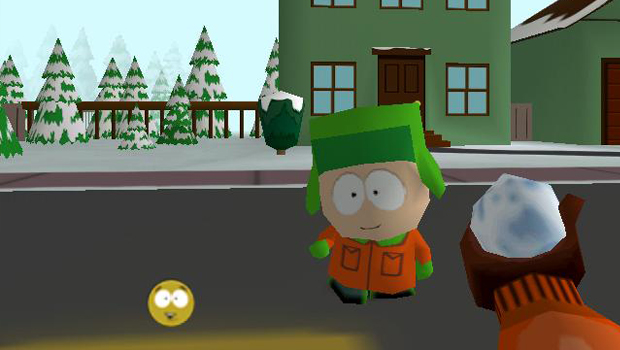
South Park N64
You'd have expected the South Park license to be used for: Some kind of anarchic, character-driven platform adventure. Conkers Bad Fur Day with less operatic faecal matter (singing poo would come later for South Park) but a considerable increase in the occurrences of anal probing.
What they actually made was: An FPS. In which hilarious comedy weapons ensure that the laughs fly as thick and fast as the bullets. As a PR man would no doubt say. If he took no pride in telling the truth. And was basically an awful human being. Even more bizarrely, the South Park FPS used the Turok 2 engine, but managed to render a deliberately simplistic linear suburban street less convincingly than the N64 pulled off a lush dinosaur-filled jungle. The excessive fog effects made it feel more like Silent Hill than a cartoon Colorado, making the otherwise crap turkey enemies far more disturbing than they had any right to be.
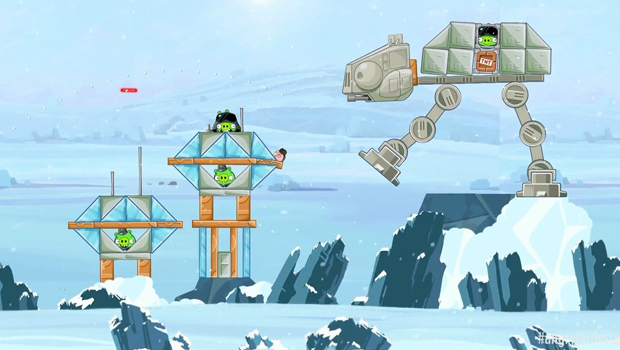
Angry Birds Star Wars iOS, Android, PC
You'd have expected the Star Wars license to be used for: Anything but Angry Birds. The Star Wars universe has eclectic video game potential exploding out of its every thermal exhaust port. Space shooters. FPS. Tactical shooters. Platformers. Even racing games. Theyre all justifiable within the Star Wars canon. They all make total sense.
What they actually made was: A game about throwing birds at AT-ATs. Apparently thats an effective way of taking them down. Despite the avian predisposition for flying away from wintry conditions having made them searingly useless during the battle of Hoth. This game also lead to the physical, video-less tabletop game Angry Birds Star Wars Jenga, surely the first game in all of history to have been developed entirely through the use of SEO.
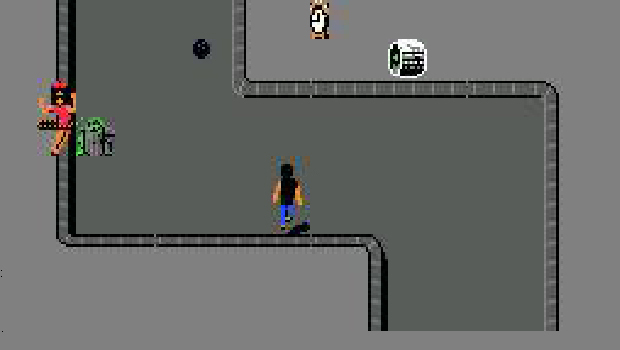
Back to the Future NES
You'd have expected the Back to the Future license to be used for: Some manner of exciting time-travelling platforming action. Maybe even with a few adventury time-manipulation bits thrown in if the hardware of the time allowed. And definitely a few token driving bits of course. Because, you know, DeLoreans.
What they actually made was: A game that understood what Back to the Future is really about. A game that knows that all of that warm, light-hearted, witty adventure and smart, character driven comedy is just subtext. A game that understands that Back to the Future is really, fundamentally, underneath all of that surface fluff, a film about a teenage boy walking along a seemingly endless street while avoiding lethal hula-hoopers. Not the devs fault if you only made the obvious surface interpretation of Zemeckis master-work.
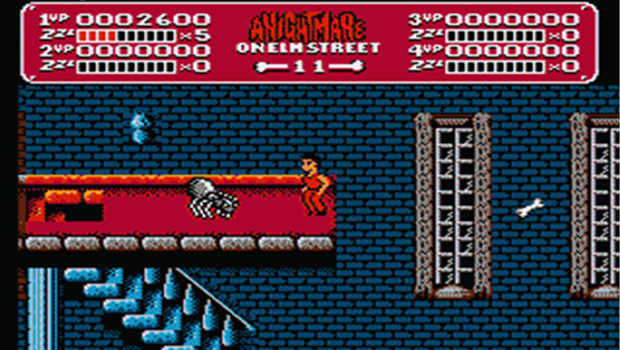
More madaptations?
So that's our list of the oddest treatments of perfectly sensible game-ready IPs. But did we miss any? Have you ever played a licensed game even more off-kilter with its original inspiration? Have you happened across a Dance Dance Revolution: Rambo Edition arcade cabinet? Or maybe you own one of the few surviving copies of War Torture Simulator with The Spice Girls? Let us know.
And while you're here, why not check out some of our similar features, like The most heavily-delayed movie licenses ever made, or maybe 10 LEGO games wed love to see? Just ignore the first entry in that latter article and pretend there's a 9 in the headline rather than a 10. You'll see what we mean when you get there.



